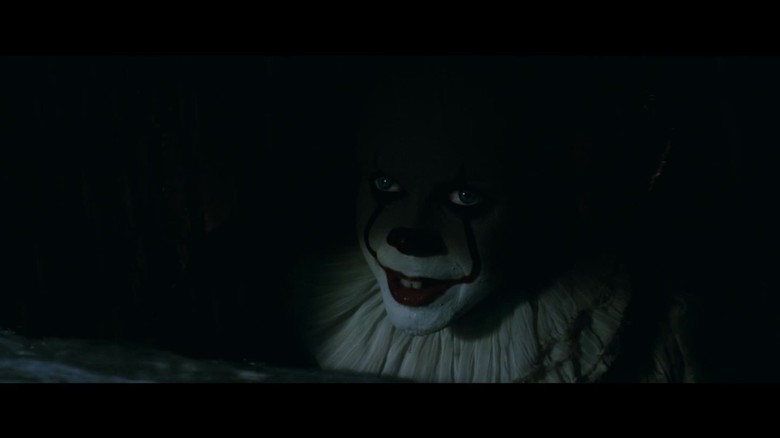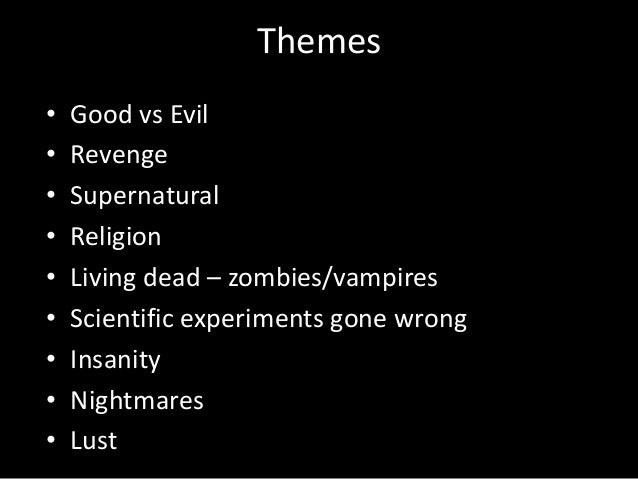What is iconography?
Iconography is the use of visual images, props and symbols in order to create an idea upon the genre of a film. For example, we have chosen to focus upon the genre of thriller therefore, these genre of movies contain a sense of mystery and horrific scenes in order to aim to frighten the audience as well as to excite them. Many thriller films contain the use of iconography therefore, this visualises why most of these films have been extremely successful within the making.
Iconography within thriller films usually include:


Themes represented within thriller films include: good against evil, depression, brutality, supernatural, suicide, murders, victimisation and narratives of teenagers exploring a sense of abandonment's.

- Weapons such as, knives or guns to reflect violence and threats towards other characters. These objects are significantly used throughout thriller films as they have connotations of danger and blood, death and brutality. An example of this the famous scene reflected in the film, 'Psycho' directed by Hitchcock. Knives are represented to suggest something is going to happen whether it involves the antagonist capturing victims and murdering them or the protagonist planning to kill the villain.
- Blood and gore caused by deaths.
- Confined spaces to make the audience feel trapped. Although, this convention tends to scare half the percentage of the audience as they may suffer from claustrophobia. Thriller films are very successful due to them conveying signs of anxiety towards the audience.
- Shadows to mask the identity of the criminals amongst the significance of the darkness. The darkness symbolises death and a sense of threat usually towards the protagonist.
- Masks to hide the criminals sense of identity and belonging during a murder etc. This is relatively evident in the popular horror, 'The Purge' directed by James DeMonaco in 2013. The narrative reflects a day of the year where the city face no laws or consequences therefore, everyone aims to attack or kill each other. However, this film uses multiple masks to keep the criminals faces unidentified. Therefore, this is done to portray a sense of mystery, suspense and further create tension and excitement upon the audience.
- Dark clothing to keep the audience drawn into the film.
- Isolated areas such as, abandoned homes or woods as there would be no sign of help or no escape routes.
- Mysterious gifts or boxes.
- Water or lakes as one person usually drowns or aims to escape this way.
Although shadows and silhouettes are another significant convention upon the iconography of thriller films as they create mystery and gradually fade in an image from a distance to reflect to the audience something is going to happen. Shadows are essential in thriller films because they create a sense of fright to the audience as well as bringing them to the edge of their seats. Within thriller films that presents shadows typically reveals the antagonist or a villain however, the protagonist within the film is oblivious to this occurring however, through their senses they are able to feel something isn't particularly right. Characters often reveal emotions through cinematography in shots such as close ups to explore a scared and panicked facial expressions in relation to the audience. An example of a silhouette which is a dark outline of something visible in restricted light is the clown revealed in 'IT' directed by Andy Muscheitti in 2017.

Confined and isolated spaces is another thriller iconography to symbolise the conventions within the genre to make it a successful movie. These types of confined areas such as, abandoned homes, and woods also makes the audience as well as the characters feel a sense of entrapment as being in a confined space often leads people as well as the protagonist, to panic and begin breathing heavily. Woods are a significant setting to create a sense of atmosphere throughout thriller films as it provides the audience with a feeling of being lost as the characters find themselves trying to find methods in order to escape. Confined spaces creates a sense of vulnerability although, it is a situation which is unavoidable as the characters will never seek help. An example of film to represent ideas of isolated and confined spaces is, 'The Cabin in the Woods' directed by Drew Goddard in 2012.
Setting is also represented through streetlights and alleyways in thrillers,which also gives an intense atmosphere to the viewers perspective, as the dark alleyway scenes keep the viewers excited as to what is going to occur and happen to the killers victim. As for the streetlight scenes it shows the viewers that the victim appears to be safe for now but the killer appears from the shadows to keep an eye on there victim. In addition, the streetlights reflect a part of mise-en-scene through the use of low key lighting with the spotlight shining down from the streetlamp. However, the darkness is juxtaposed to the light as it symbolises the character is alone in the dark therefore, it creates a sense of fright and horror as the audience are unaware of what underlies beneath the darkness. The significance of the darkness reveals a tense atmosphere. Although, the low key lighting is used to capture the character against the surroundings in order to portray a focus on screen. Within this particular type of scene as it depicts a sense of isolation the audience could become more involved with the narrative as opposed to the emotions presented through the characters as they could of experienced a similar situation to this in their life.
Themes represented within thriller films include: good against evil, depression, brutality, supernatural, suicide, murders, victimisation and narratives of teenagers exploring a sense of abandonment's.

No comments:
Post a Comment